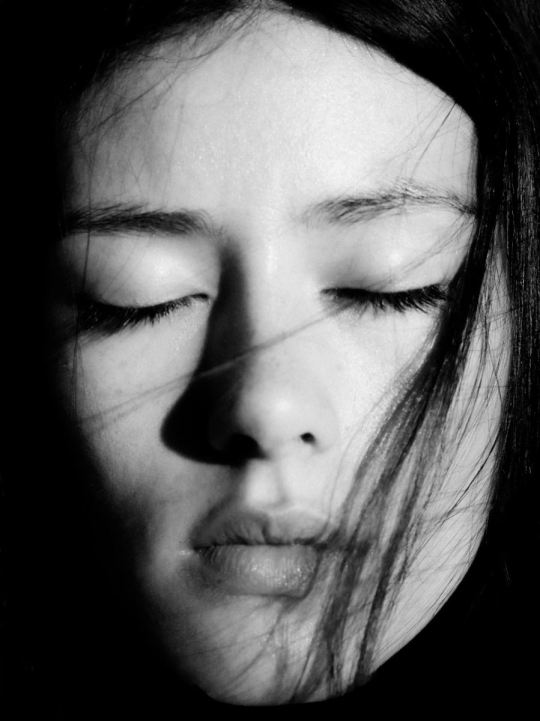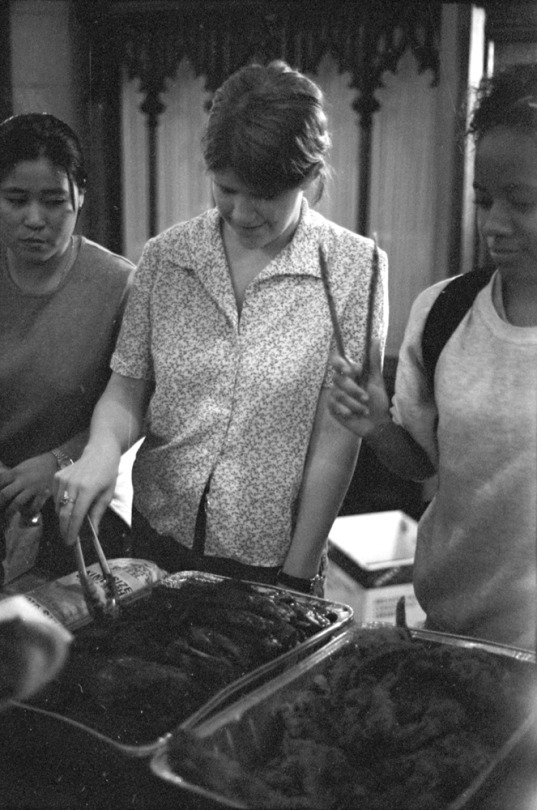#Mahalia Celeste
Explore tagged Tumblr posts
Photo

Mahalia Celeste, Heather Diamond Strongarm Paris Fashion Week RTW AW24 - Dior - Mahalia Celeste, Heather Diamond Strongarm Book┃IG
#Dior#Fashion#Fashion Week#Fashion week paris#Heather Diamond Strongarm#Jean Baptiste Soulliat#Mahalia Celeste#Model#Models#Paris#Paris Fashion Week#Streetstyle#backstage#mode#pfw#portrait#pret a porter
11 notes
·
View notes
Text

Mahalia Celeste @ Fabbrica
9 notes
·
View notes
Text

Mahalia Celeste Henderson
#mahalia celeste henderson#photography#fashion#art#style#editorial#model#models#beauty#makeup#desolationfires
29 notes
·
View notes
Text

Dior, FW24
Model Mahalia Celeste Henderson
#Dior#christian dior#mahalia celeste henderson#Mahalia Henderson#fashion#fw24#luxury#glamour#ootd#follow#couture#haute couture#makeup#women's fashion#shopaholixs#fashion photography#high fashion#fashion week#rtw#ready to wear#catwalk#model#runway
12 notes
·
View notes
Text

Mahalia Celeste Henderson photographed by
Karolina Pukowiec
2 notes
·
View notes
Text



Jason Wu RTW Runway F/W '24
3 notes
·
View notes
Text


Mahalia Celeste Henderson photographed by Karolina Pukowiec
1K notes
·
View notes
Text

86 notes
·
View notes
Text

Mahalia Celeste photographed by Karolina Pukowiec.
272 notes
·
View notes
Photo

Jesi Shelnutt, Mahalia Celeste, Yoni Tjin Paris Fashion Week SS24 - Loewe - Jesi Shelnutt, Mahalia Celeste, Yoni Tjin Book┃IG
#Fashion#Fashion week paris#Jean Baptiste Soulliat#Jesi Shelnutt#Loewe#Mahalia Celeste#Model#Models#Paris#Paris Fashion Week#SS24#Streetstyle#Yoni Tjin#backstage#mode#pfw#portrait#pret à porter
8 notes
·
View notes
Text


Mahalia Celeste Henderson - Australian, Unknown
#face claims central#face claims#female models#character inspiration#beautiful girls#models#female face claims#fancast#fan cast#wattpad#australian#australian female models#australian models#australian girls#australian beauty#rpg oc#oc rp#rp oc#rp#rpg#pacific islander female models#pacific islander female face claims#pacific islander face claims#brunette#brunette girls#brunette female models#brunette models#brunette characters
9 notes
·
View notes
Text

Mahalia Celeste Henderson
#mahalia celeste henderson#photography#fashion#art#style#editorial#model#models#beauty#makeup#desolationfires
7 notes
·
View notes
Text
youtube

Alberta Ferretti 2025 👗 Collection: Ready-to-Wear Season: Womenswear Spring Summer 2025 Fashion Show Location of the event: Milan Fashion Week 2024 Video quality: 1080p (Full HD)
Models: Abby Champion, Achol Ayor, Aivita Mūze, Alaato Jazyper, Ali Dansky, América González, Annie Arnander, Anouk Smits, Apolline Rocco Fohrer, Awar Odhiang, Bebe Parnell, Betsy Gaghan, Bibi Breslin, Caitlin Soetendal, Clara Denison, Dru Campbell, Elise Kouzou, Ella Mccutcheon, Farah Nieuwburg, Hejia Li, Huijia Chen, Jennifer Matias, Libby Bennett, Lilli Cummings, Lulu Tenney, Mahalia Celeste Henderson, Mary Ukech, Miriam Sanchez, Nora Attal, Nyaboth Lothbor, Rayssa Medeiros, Sara Caballero, Sheila Bawar, Sihana Shalaj, Sophia Lisboa, Tora Grieg-Cappelen, Victoria Fawole, Vivienne Rohner, Xiaohan Chen, Yilan Hua
🎁 Stunning DRESSES from $11.99: https://fas.st/WbfHv 🔥
#alberta ferretti#milan fashion week#spring summer 2025#beauty#fashion#runway#beautiful#style#model#clothes#catwalk#luxury#dress#girls#gown#fashion show#womenswear#ready to wear#Youtube
3 notes
·
View notes
Text
Holding space: The Archive and Blues Tradition at the University of Chicago

Performance spaces like the Checkerboard Lounge, Theresa’s, Buddy Guy’s Legends, Club DeLisa, Pepper’s Lounge, Gerri’s Palm Tavern, and the Parkway Lounge have, historically, made the City of Chicago synonymous with the Blues. They were critical neighborhood institutions that also helped to forge local community ties and pathways for global connections. However, extant narratives of the history of Chicago Blues are absent of the part that The University of Chicago has played in that formation. So much so, in 2003, journalist Celeste Garrett wrote that the University was “known more for generating Nobel Prize winners than for being a source of the Blues.” This is true. At present, in fact, there are 97 Nobel Prize winners who are or have been associated with the University. However, what is little known about the institution, as the archive reveals, is that The University of Chicago played a small, but crucial, role in fashioning a space and place for the presence and preservation of Chicago Blues history and culture.
Perchance, the University’s manifold attractions and interests and distractions, along with its perceived distance to African American history and lifeworld’s, we tend to disassociate it with such diasporic cultural attractions and productions such as Blues. Contrary to popular belief, the University, equal to the institutions listed above, held space for the blues, its traditions, and celebrated and prepared for its thriving futurity.
In the 1940s, the campus hosted its first blue’s performance. Then, in 1952, the first major concert was produced, with performances by Chick Heston, Preston Jackson, John Henly, William “King” Colax, Ernest Crawford, and Mammy Yancy, headlined by Mahalia Jackson, and sponsored by the “Student Cultural Clubs.” On campus Howlin’ Wolf and Muddy Waters were among the most favored performers and personalities. Howlin’ Wolf first performed at UC in 1960 and at the end of the decade an advertisement in the classifieds of the Daily Maroon read, “Who the hell wants to go to Washington when Howlin’ Wolf is playing right here on campus, tomorrow nite [sic] for only $1.50 (sure beats $25).” And, in 1962, the Salisbury House hosted a dinner for Muddy Waters, engaging him on the blues, his life story, his artistry and aesthetics and philosophy. These events seemed to cement the Blue’s in the cultural landscape of the institution that no one seemed to be aware of in spite of the festivals that grew up there, including the annual Folk Festival organized by the Folk Society, the Blues and Ribs festival that came later, and the Logan Center Bluesfest and the other concerts that were promoted by Enterprise Productions, the Alumni Association, and the Inter Fraternity Council. Though concerts were put on at Mandel Hall, other spaces around campus were (or became) places for the Blues, including Bartlett Gymnasium, Ida Noyes Hall, and, much later, the Logan Center for the Arts.

The concerts were not exclusively to student or UC associates; the invites were extended to all interested in the music. Many came to the University for those performances to be baptized and delivered in the holy sonic waters of such artists like Chester Burnett, Big Bill Broonzy, Buddy Guy, James Cotton, Elvin Bishop’s Big Fun Trio, Jimmy Johnson, Eddy Clearwater, Corky Siegel, Lil’ Ed, and Melody Angel, Willie Dixon, Elizabeth Cotten, “Mississippi” John Hurt, Roscoe Holcomb, the Stanley Brothers, Paul Butterfield, Louis Killen, Koko Taylor, and Billy Branch, among many others. As with the blues performances scattered about the city, reverberating the blues houses near and far, the clientele that patronized the university concerts, came to lay down the quotidian, the stuff that invented the blues, what Houston Baker surmised as the “world of transience, instability, hard luck, brutalizing work, lost love, minimal security, and enduring human wit and resourcefulness in the face of disaster.”
What’s more, the University of Chicago offered to help preserve the culture of the blues in the city by keeping the Checkerboard Lounge open (that closed in 2003, but reopened in Hyde Park in 2005), while many of the other clubs that helped to place Chicago Blue’s on the map have closed. During the early negotiations of this transition, former UC Vice President for Community and Government Affairs, referring to these historical neighborhood institutions, most notably the Checkerboard, argued for this rescue plan saying, “It’s an important place in history in a city where it’s important to preserve it.” He was right.
The University of Chicago’s influence doesn’t end there: the institution has been acknowledged for its impact on the Nobel Prize winning blues instrumentalist Henry Threadgill, who learned avant-garde classical music attending performances of the Contemporary Chamber Players at the University of Chicago growing up. As well as Elvin Bishop, another Chicago native, of the Elvin Bishop Group, who also attended classes at the University of Chicago, who made the Southside and West Side digs his classroom as well. And there are others, not to mention, Paul Butterfield whose band, as Paul Eisenberg reported earlier this year, The Butterfield Blues Band was formed out of the many activities surrounding the blues festival that was organized at the University of Chicago. The band went on to become a major influence abroad spreading the Chicago-style blues abroad, furthering the legacy of the many blues artists who descended upon the city many years prior.
This dive here is but a brief one; perhaps the start of an archival project to investigate the overall impact that the University has had on the Blues community in Chicago, and, more specifically, the African American community throughout the Southside who favored the institution as their scene for blues performances and have recollections regarding it as a site of memory. Howard Reich noted in 2005 that “. . . Chicago blues are everywhere in this town – if you know how to listen.” It appears that the sonic resonances of the blues are everywhere in the University’s archives. By listening to the archive available at the University, then, where it intersects with the Blue’s scene across the city and, most notably, within the Black community, researchers might find other profound socially based reverberations and hidden histories of the blue’s, reflecting and fomenting other realities and pathways for understanding the past and present conditions of Chicago’s communities.
Literary scholar Steve Tracy reminds us that “. . . the blues provides ‘a structured but expansive place for the individual to relate to and express the community, and for artists to touch home base but still express themselves individually.” We are uniquely positioned to expand with deeper dives into the library’s digitized collections (including the Campus Publications and the Photographic Archives) and University Archives, to discover and institute pathways for transformative community building and public history projects.

Images Top to Bottom:
Audience enjoying a Blues concert, circa 1990s. Photograph by Adam Lisberg, Chicago Maroon. UChicago Photographic Archive apf7-03946.
Three young women enjoy barbecued ribs at the Blues and Ribs festival in the University of Chicago's Ida Noyes Hall, October 1997. Photograph by Melody Weinstein, Chicago Maroon. UChicago Photographic Archive apf7-05986-001.
Buddy Guy plays a concert with his band in Mandel Hall at the University of Chicago, January 24, 1992. Photograph by Richard Kornylak, Chicago Maroon. UChicago Photographic Archive apf7-03949-002.
14 notes
·
View notes

